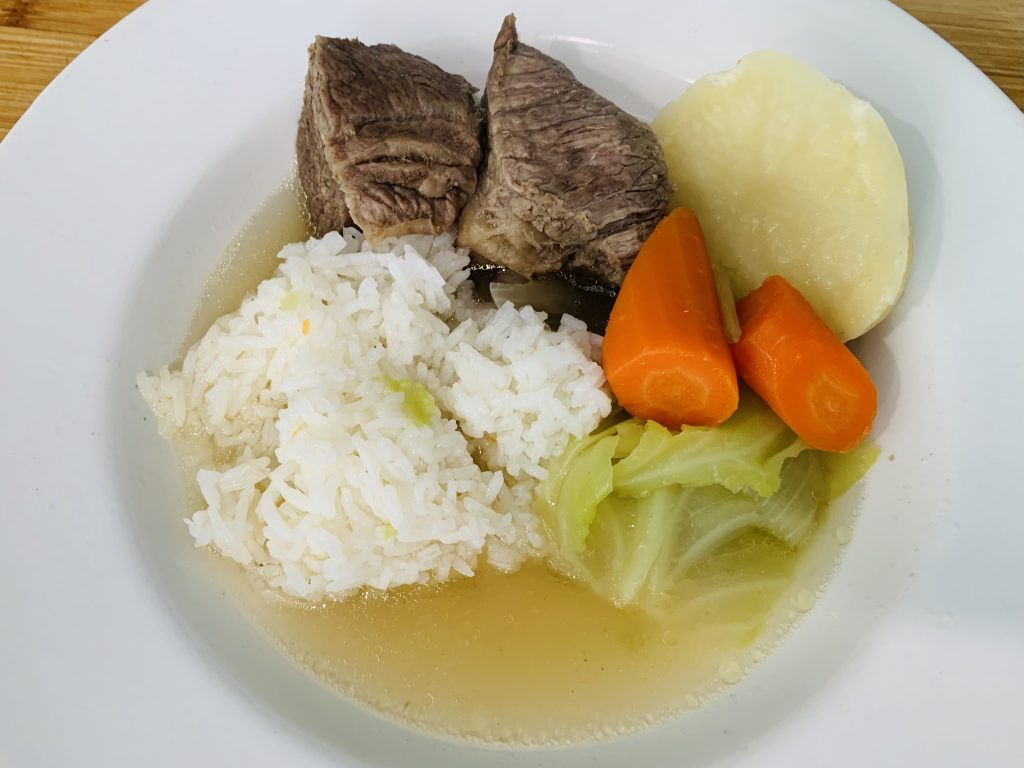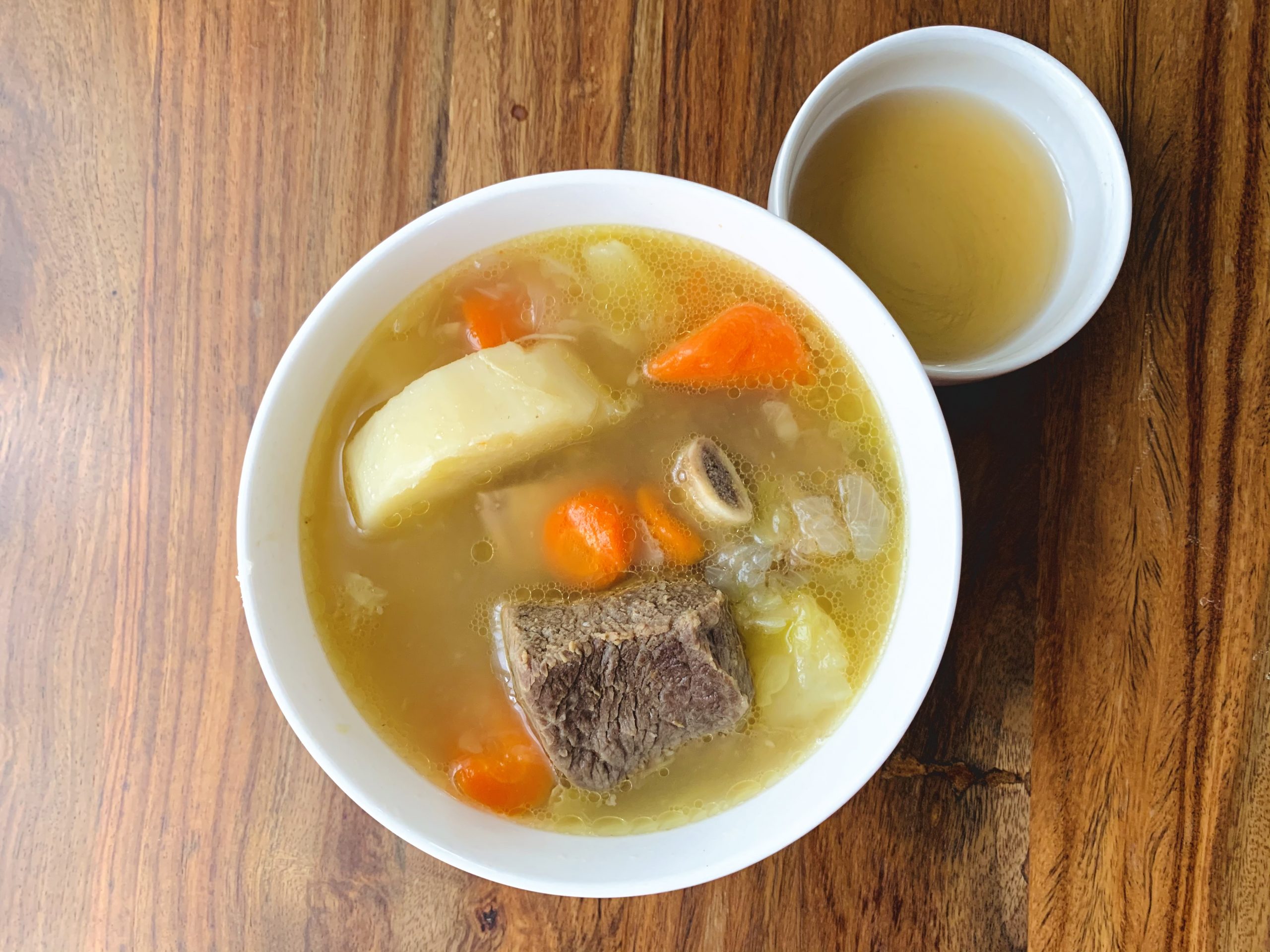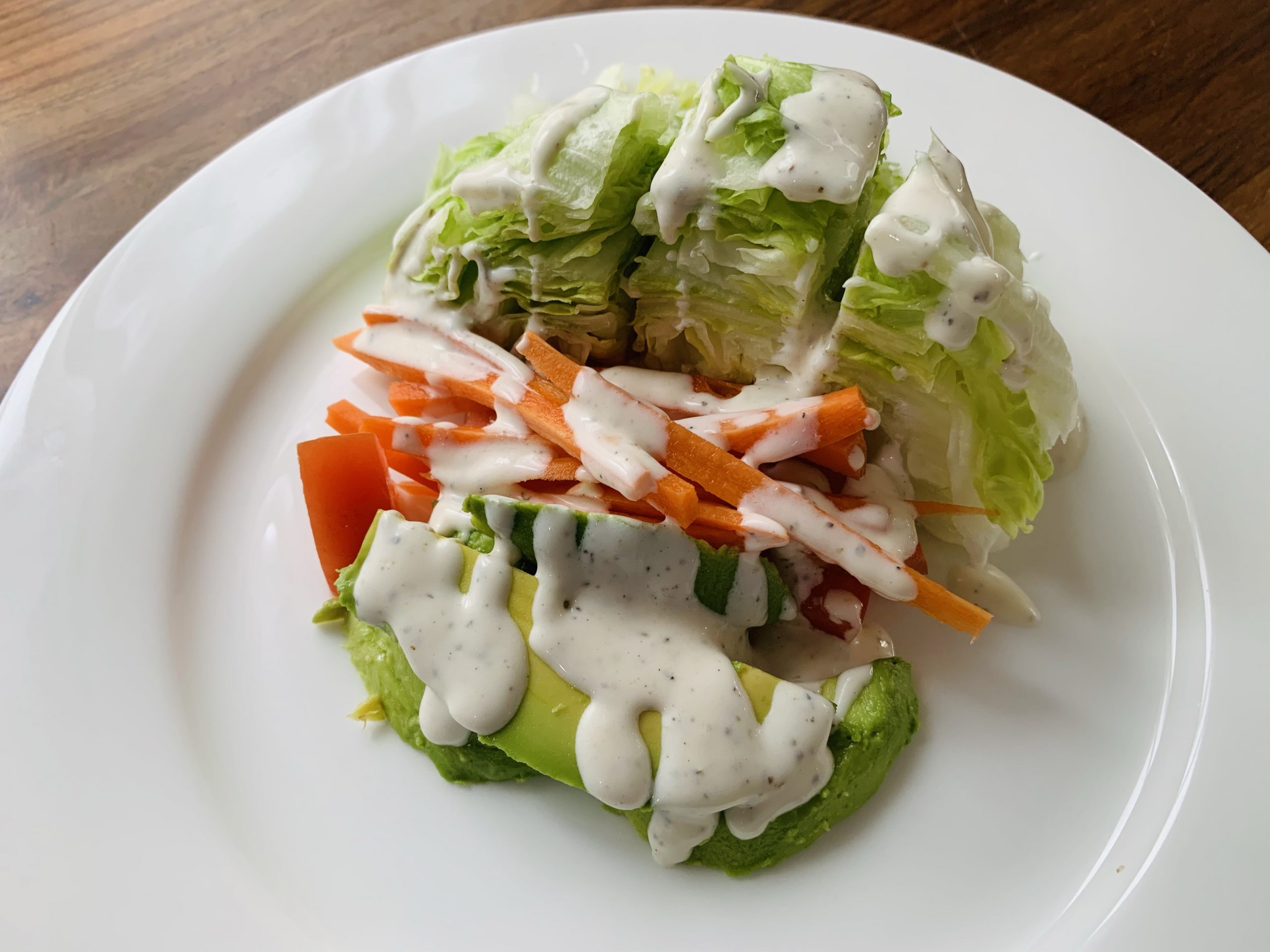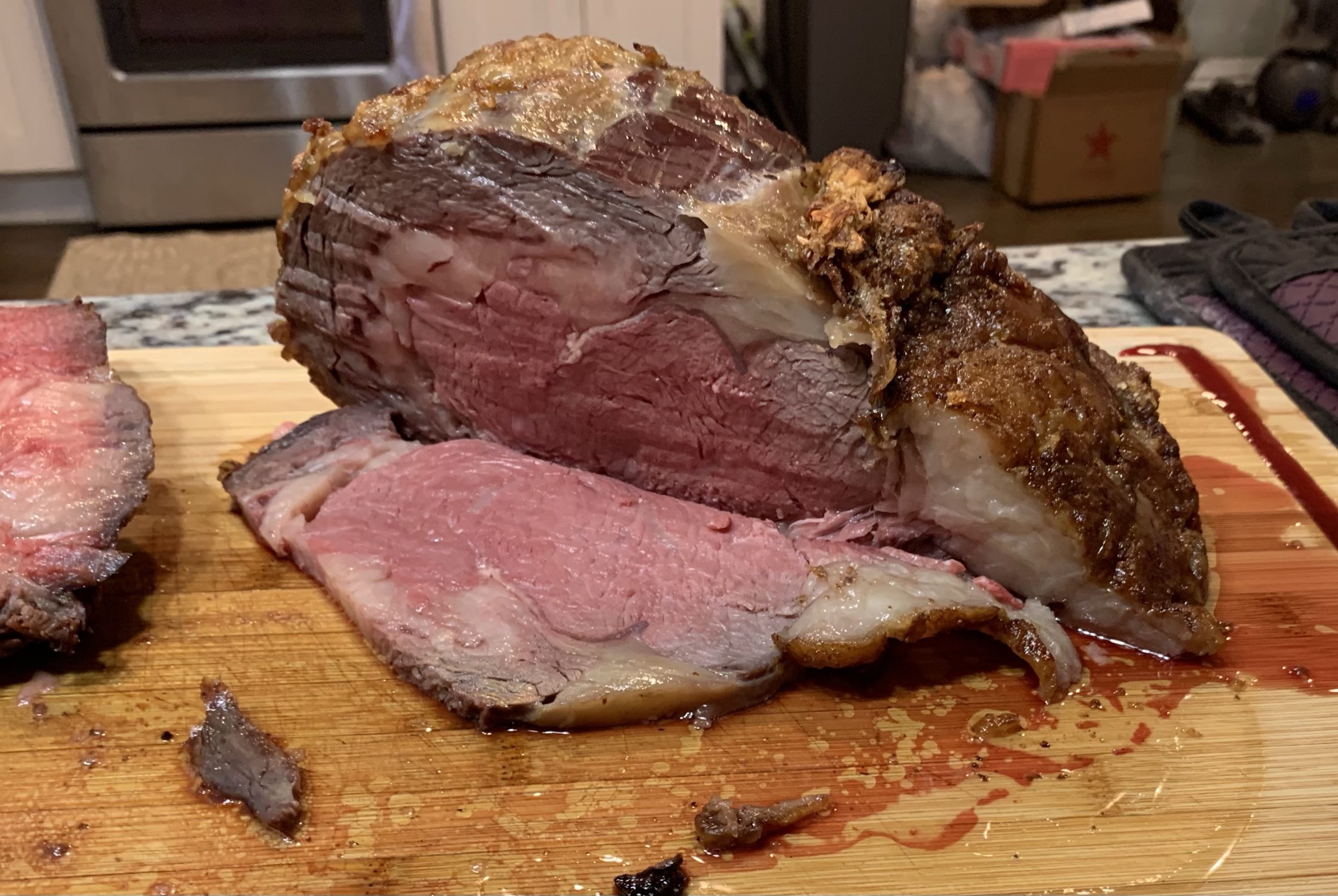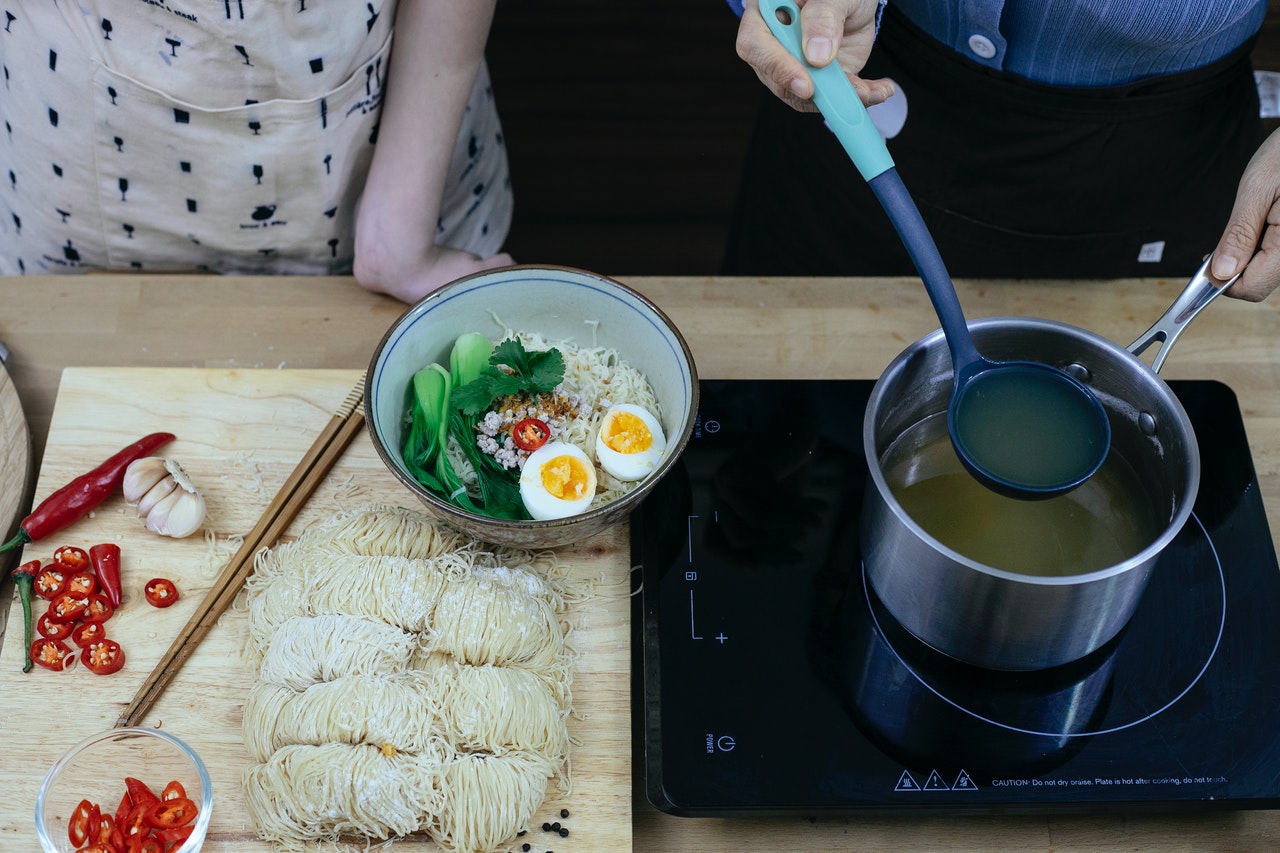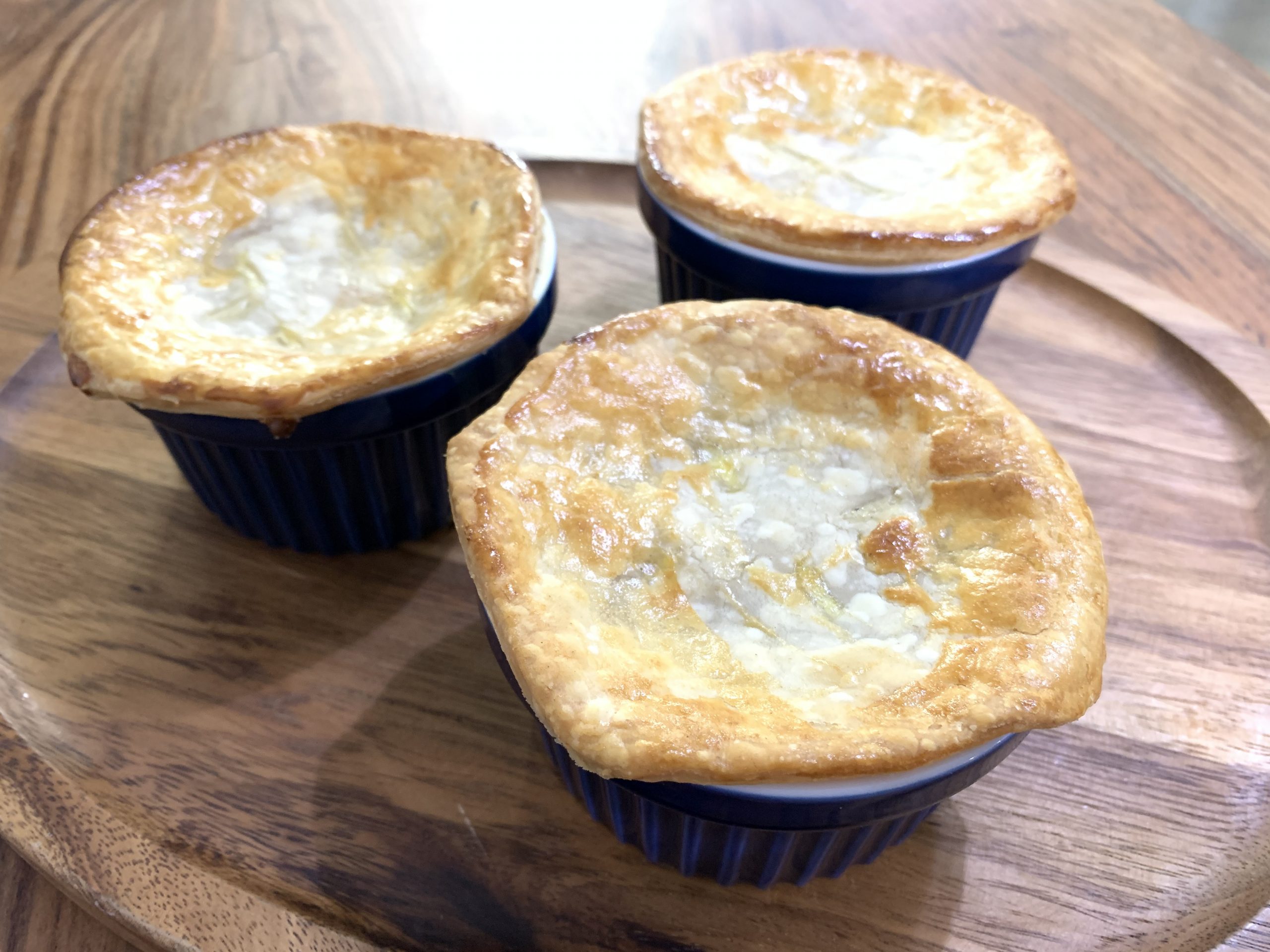There are several different comfort foods that take me back to growing up as a young Filipino American, and a lot of them are soup dishes. I suppose it’s no surprise that eating them gives me a warm feeling inside in addition to the flashbacks of enjoying them in the comfort of my family’s kitchen. One of those dishes is a hearty helping of beef nilaga, or beef stew. Ask any Filipino American what dishes take them back to their moms, lolas or titas kitchen, and beef nilaga is sure to be on their list.
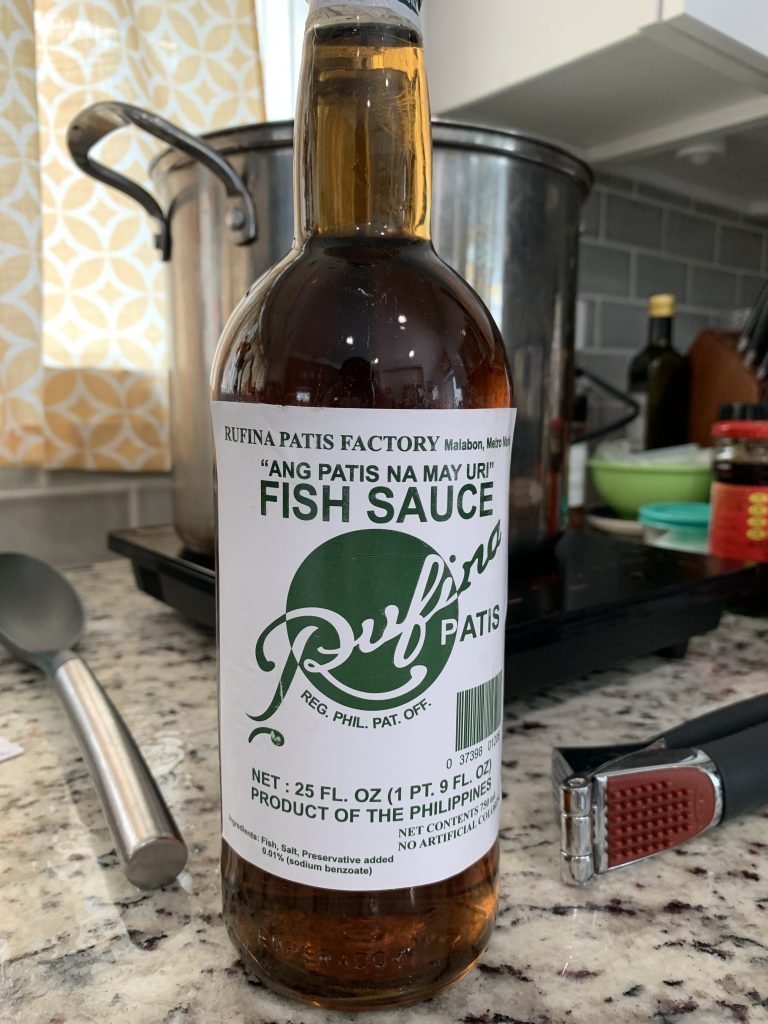
Beef nilaga isn’t unlike most beef-based stews. It actually may look very familiar to a variety of different cultures as there’s little that distinctly makes this dish Filipino, except for the use of fish sauce (or patis in Tagalog) to season or saba for sweetness. It can easily resemble any European dish of beef, potatoes and cabbage. However, perhaps the thing that sets it aside is it is served with steamed white rice, which is perfect for sopping up delicious liquids that it is submerged in.
Beef nilaga’s soup base is made of boiling beef (usually beef with bones like a shank or a rib) for an extended period of time until a beef broth is made and the meat is fall-off-the-bone tender. Near the end of the long boil a variety of vegetables may be added like potatoes, carrots, and cabbage. Other traditional additions are thick string beans, bok choy, cobs of corn, and even native Filipino bananas called saba, which are much like plantains or a thicker banana.
For anyone wondering, we do straddle the line of “is this soup bulalo (beef stock) or nilaga (beef broth)”, which changes the moment you have beef bones in the mix. I honestly don’t think it matters because we don’t cook the bones long enough to get what I think is a pure stocky flavor out of it. Therefore, I am calling it nilaga, but if you cook your bones for a few hours more, then we can talk bulalo bro.
It is important to note that beef short ribs are not the cheapest cut and you can always substitute with a less expensive beef like a beef shank bone or sliced chuck. However, I do love the taste of beef ribs and I like to think that using a more preferable cut is a nod to all my parent’s hard work (like “we made it Mom, we’re eating beef ribs!”).
Knowing Your Heritage Through Food
Something I encourage 1st generation Filipino Americans like myself is to learn how to make your culture’s food. Food transcends time, generations, religious & political views and anything else that might seem to divide us. Like a lot of the Filipino dishes in my repertoire, I learned this recipe from observing my parents, grandparents, aunts and uncles make this throughout my growing up. In addition to looking up some written recipes, I took opportunities at family parties or gatherings to ask questions about how they made their own version of a dish.
This is my recipe for beef nilaga as I prepare it for my own little family. It must be good because my wife says it gives her the comfort food feeling when she eats it. My hope is my kids remember eating it when they grow up and even modify it as they pass it down to their future generations.
Time: 1 hour
Servings: 4-5
Ingredients
- 1.5-2 lbs bone-in beef short ribs (cut into 3″ cubes if able), beef shanks, or cubed chuck.
- 8 cups of water (or enough to submerge ribs)
- 5-7 cloves of garlic
- 1 medium onion
- 2 large potatoes sliced thick
- 2 large carrots
- 1/2 cabbage
- 3-4 tbs Fish Sauce (Patis)
- 1 tsp whole black pepper corns (optional)
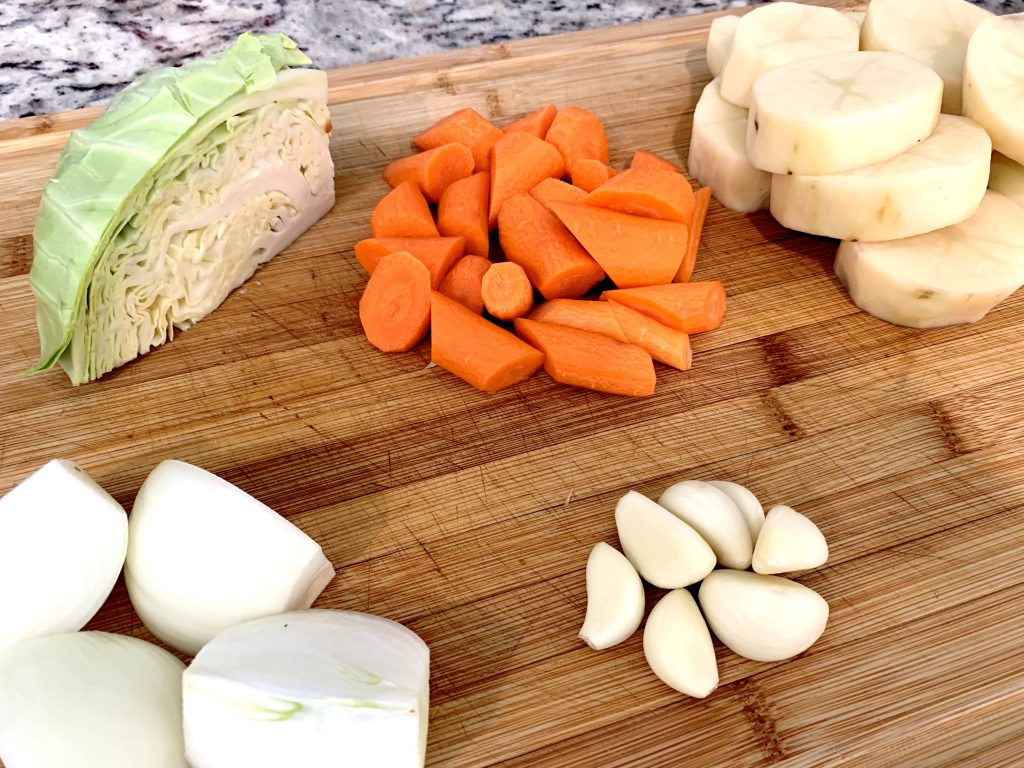
Other Vegetable Substitutes
- Saba (Filipino Plantain)
- String beans
- Baby Bok Choy
- Corn on the cob – sliced in quarters
Steps
1. Place beef ribs in a large pot and submerge in water. Boil ribs for about 5-10 minutes until the impurities or “scum” rise to the top. Skim the top and discard, then remove the beef and set aside while you dump the water and clean the pot.
2. Refill the pot with about 8 cups of water or enough to submerge the ribs entirely. Then set the water to a boil. Add the garlic & onion. At this stage add the peppercorns if you wish to do so. I don’t particularly think this dish needs it nor do I like biting into them, but if you like them add them here. Stir the beef to make sure they don’t stick to the bottom of the pot and keep them at a low rolling boil for 45-50 minutes or until reached desired tenderness.
3. After about 30 minutes when I know the beef is fully cooked, I like to stir in the fish sauce to season and taste.
4. After the beef have cooked and are tender, add in the thicker vegetables like the potato and carrots and keep cooking for another 15 minutes. If you’re cooking thinner or leafy vegetables like the cabbage, bok choy or string beans, you may choose to remove them a few minutes earlier so they’re blanched and not over cooked.
When your beef and vegetables are all cooked simply ladle out some ribs, soup and vegetables onto a large bowl and serve with a side of steamed rice. I love eating this dish with a side of patis and ceyenne pepper (I like spice) in a small dipping bowl so I can add portions of fish sauce to each bite.
This dish is warm, hearty and so delicious. My kids can eat up multiple bowls of rice and soup in one sitting – and it is not easy to convince my kids to eat anything! There’s no wonder it is a dish that brings back comfortable memories to Filipinos everywhere. And there’s nothing that says you have to be Filipino to make your own delicious beef nilaga memories too. Enjoy!
